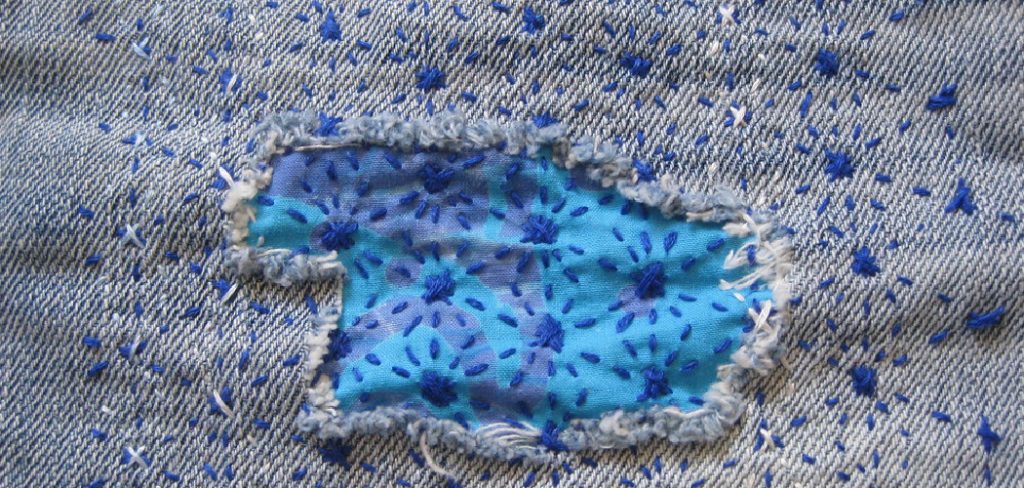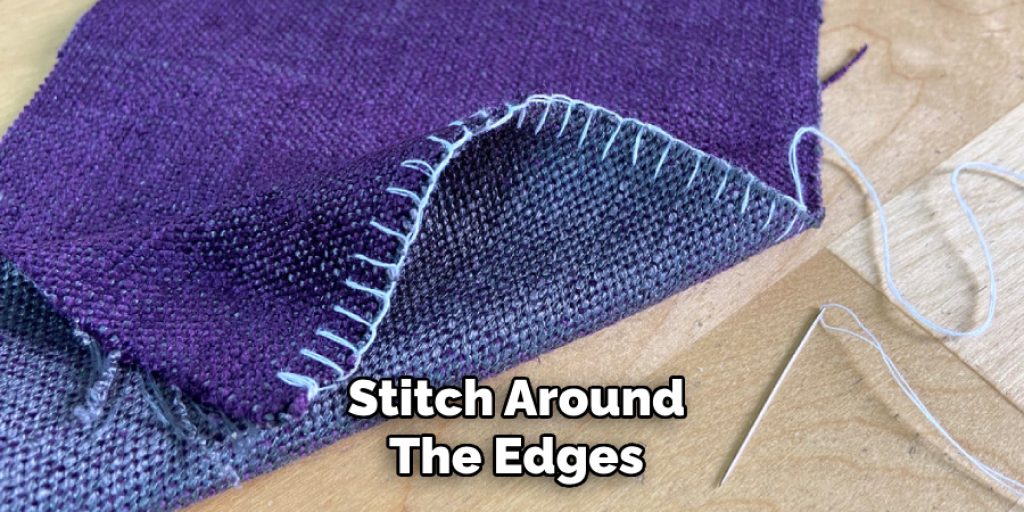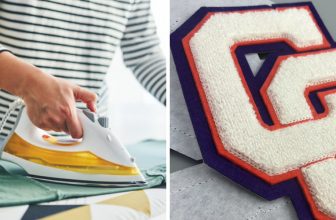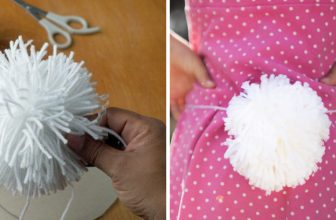How to Sashiko Mend
Sashiko mending is a traditional Japanese technique that not only repairs fabric but also adds a beautiful decorative element to worn clothing. Originating in the Edo period, sashiko was initially a practical way to extend the life of garments through reinforcing and patching. Today, it is celebrated for its unique stitching patterns and the artistic value it brings to textiles.

This introduction to sashiko mending will guide you through the essential techniques and materials needed for how to sashiko mend, transforming your damaged items into visually stunning pieces filled with character and history.
Understanding Sashiko
Sashiko, which means “little stabs” in Japanese, embodies a rich cultural heritage and showcases the artistry of textile repair. Traditionally, this technique used a running stitch to create a textured pattern, enhancing the durability of the fabric while providing visual appeal. The threads are typically white or indigo against a contrasting fabric, resulting in striking designs that celebrate the beauty of imperfection.
In addition to its practical applications, sashiko reflects a philosophy of sustainability and mindful craftsmanship, as it turns the act of mending into an art form that honours the history of the garment. By practicing sashiko, one not only revives old clothing but also preserves a cherished tradition that emphasises resourcefulness and creativity.
Materials and Tools Needed
To get started with sashiko mending, you’ll need a few essential materials and tools that will help you achieve beautiful results. Here’s a list of what you’ll require:
- Fabric: Choose durable fabric for patching, such as cotton or linen. Select a contrasting fabric to create visual interest and highlight your stitching.
- Sashiko Thread: Use thick cotton sashiko thread, usually in white or indigo, which is designed to withstand the rigours of mending while providing striking colour contrast.
- Needles: Sashiko needles are longer and thicker than regular sewing needles, allowing for easier handling of multiple layers and thicker threads. Look for needles specifically designed for sashiko work.
- Scissors: A sharp pair of fabric scissors is essential for cleanly cutting threads and fabric pieces.
- Chalk or Fabric Marker: Use these tools to trace patterns or mark areas where you’ll be mending, ensuring precision in your design.
- Thimble: To protect your fingers while pushing the needle through fabric, a thimble is a helpful addition, particularly when working with thicker materials.
10 Methods How to Sashiko Mend
1. Basic Running Stitch
The basic running stitch is the foundation of Sashiko mending and can be used to repair simple tears and worn areas. Begin by threading a Sashiko needle with Sashiko thread, which is thicker than regular sewing thread and comes in various colors. Knot one end of the thread and insert the needle through the fabric from the underside. Make small, even stitches along the tear or worn area, keeping the stitches consistent in length.

This straightforward technique reinforces the fabric and creates a visually appealing pattern. The basic running stitch can be used alone or as a base for more complex designs.
2. Grid Pattern
The grid pattern method involves creating a series of intersecting lines to form a grid. This technique is particularly effective for reinforcing large areas of fabric that have become thin or damaged. Start by marking a grid on the fabric using a fabric pencil or disappearing ink pen. The grid lines should be evenly spaced, typically around 1/4 to 1/2 inch apart. Using the basic running stitch, sew along each line of the grid, ensuring the stitches are uniform in size. This method not only strengthens the fabric but also adds a decorative geometric pattern.
3. Kaki-no-Hana (Persimmon Flower)
Kaki-no-Hana, or persimmon flower, is a traditional Sashiko pattern that resembles a blooming flower. This pattern is ideal for mending small holes or tears and adding decorative elements to your fabric. Begin by drawing a small square around the area you want to mend. Within the square, draw diagonal lines connecting the corners to form an X. Next, draw additional lines to create diamond shapes within the square.
Using a Sashiko needle and thread, stitch along the lines, starting from the center and working outward. This method creates a beautiful flower-like pattern that both mends and decorates the fabric.
4. Asanoha (Hemp Leaf)
The Asanoha, or hemp leaf pattern, is a popular Sashiko design that features interlocking diamonds resembling hemp leaves. This pattern is excellent for reinforcing larger areas of fabric and adding a striking geometric design. Begin by marking the fabric with a series of evenly spaced parallel lines, both horizontally and vertically, to create a grid. Within each square of the grid, draw diagonal lines to form a diamond shape.

Stitch along these lines using the basic running stitch, ensuring the stitches are even and consistent. The Asanoha pattern not only reinforces the fabric but also adds a visually captivating design.
5. Seigaiha (Blue Ocean Waves)
Seigaiha, or blue ocean waves, is a traditional Sashiko pattern that resembles overlapping waves. This design is perfect for mending and embellishing large areas of fabric. Start by marking a series of parallel horizontal lines on the fabric, spaced evenly apart. Along each line, draw a series of semi-circles to create the wave pattern.
Using a Sashiko needle and thread, stitch along the curved lines, ensuring the stitches are even and consistent. The Seigaiha pattern not only reinforces the fabric but also adds a beautiful, flowing design reminiscent of the ocean.
6. Hishi Sashi (Diamond Stitch)
Hishi Sashi, or diamond stitch, is a versatile Sashiko pattern that creates a series of interlocking diamonds. This pattern is ideal for reinforcing fabric and adding a striking geometric design. Begin by marking a series of evenly spaced parallel lines, both horizontally and vertically, to create a grid. Within each square of the grid, draw diagonal lines to form diamond shapes. Using the basic running stitch, sew along these lines, ensuring the stitches are even and consistent. The Hishi Sashi pattern not only strengthens the fabric but also adds a visually appealing design.
7. Hitomezashi (One-Stitch)
Hitomezashi, or one-stitch, is a Sashiko technique that involves creating a series of small, individual stitches to form a pattern. This method is particularly effective for mending small tears and adding decorative elements to your fabric. Begin by marking the fabric with a series of evenly spaced dots or small lines. Using a Sashiko needle and thread, make a single stitch at each mark, ensuring the stitches are uniform in size. This method creates a delicate, dotted pattern that both reinforces and decorates the fabric.

8. Kogin Sashi
Kogin Sashi is a type of Sashiko that originates from the Tsugaru region of Japan. It involves creating intricate geometric patterns using horizontal and vertical stitches. This technique is excellent for reinforcing fabric and adding a detailed design. Begin by marking the fabric with a series of evenly spaced horizontal and vertical lines to create a grid. Within each square of the grid, draw additional lines to form a geometric pattern.
Using a Sashiko needle and thread, stitch along these lines, ensuring the stitches are even and consistent. The Kogin Sashi technique not only strengthens the fabric but also adds a beautiful, intricate design.
9. Moyouzashi (Pattern Stitch)
Moyouzashi, or pattern stitch, involves creating larger, more complex patterns using a series of running stitches. This method is ideal for mending large areas of fabric and adding a detailed design. Begin by selecting a traditional Sashiko pattern, such as a geometric design or a nature-inspired motif.
Mark the pattern on the fabric using a fabric pencil or disappearing ink pen. Using a Sashiko needle and thread, stitch along the lines of the pattern, ensuring the stitches are even and consistent. The Moyouzashi technique not only reinforces the fabric but also adds a visually captivating design.
10. Boro Style
Boro is a traditional Japanese mending technique that involves layering and stitching patches of fabric to repair and reinforce worn textiles. This method is perfect for mending large areas of fabric and adding a unique, textured design. Begin by selecting patches of fabric that complement the garment you are mending. Place the patches over the worn or damaged areas, securing them with pins.
Using a Sashiko needle and thread, stitch around the edges of the patches with the basic running stitch, ensuring the stitches are even and consistent. For added reinforcement, stitch additional patterns or designs over the patches. The Boro style not only strengthens the fabric but also adds a beautiful, layered texture.

Conclusion
Sashiko mending is a beautiful and practical technique that combines traditional craftsmanship with modern creativity. Each of these ten methods offers a unique approach to repairing and embellishing textiles, from the basic running stitch to intricate patterns like Kaki-no-Hana and Asanoha. Whether you are reinforcing a worn area, repairing a tear, or simply adding a decorative element, these detailed methods provide a comprehensive guide to mastering the art of Sashiko mending. Thanks for reading, and we hope this has given you some inspiration on how to sashiko mend!




